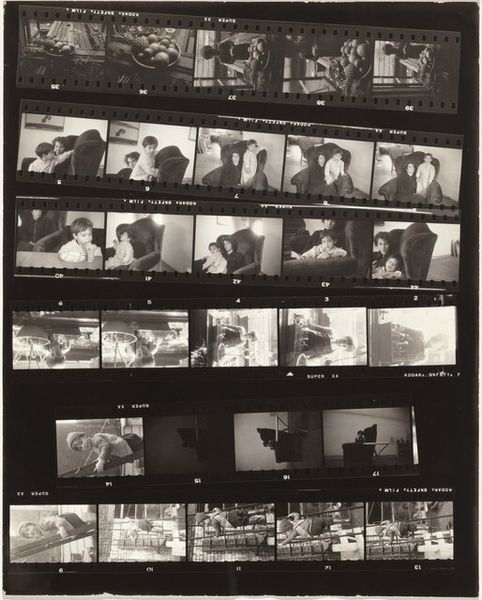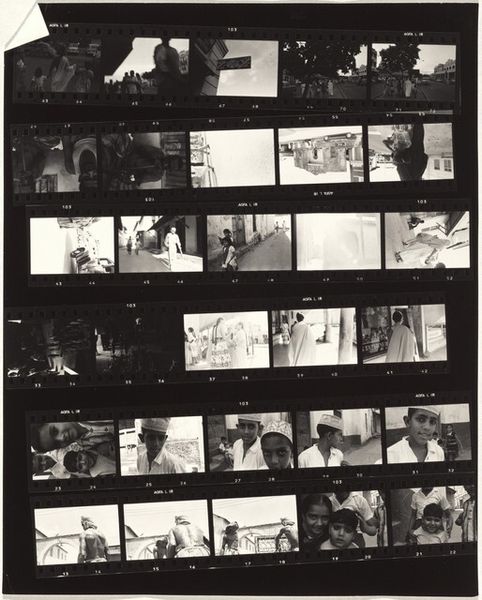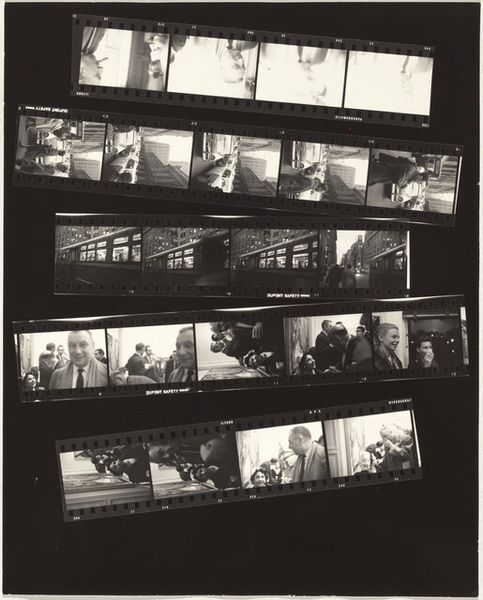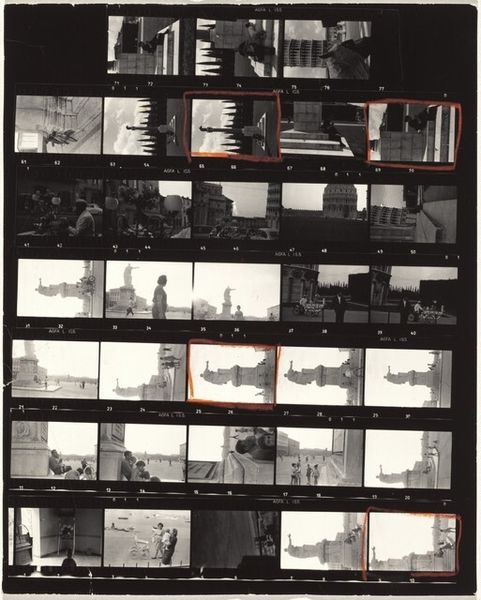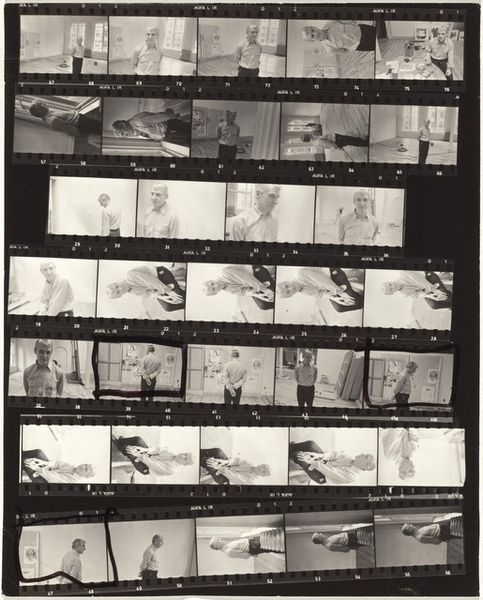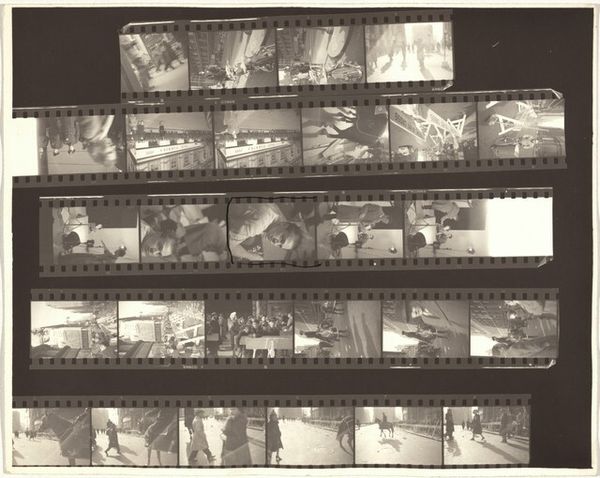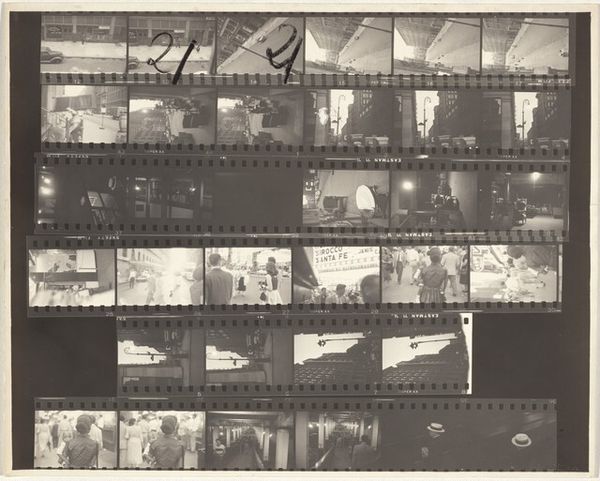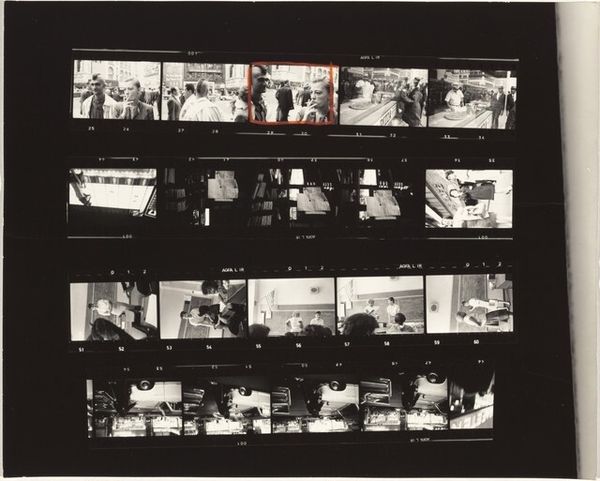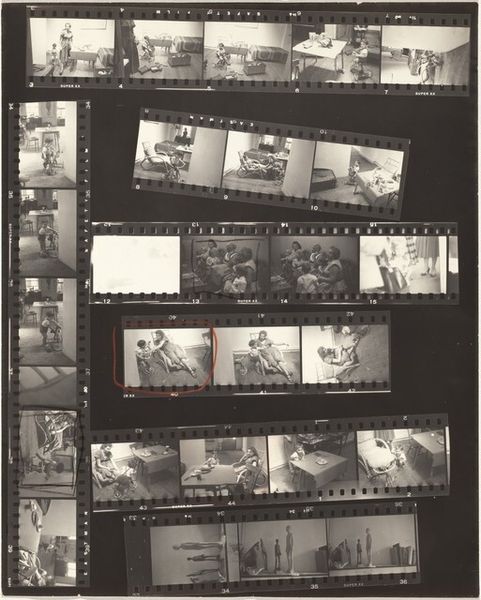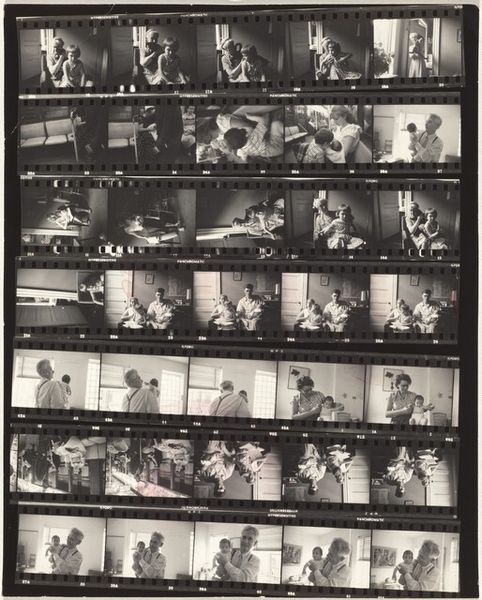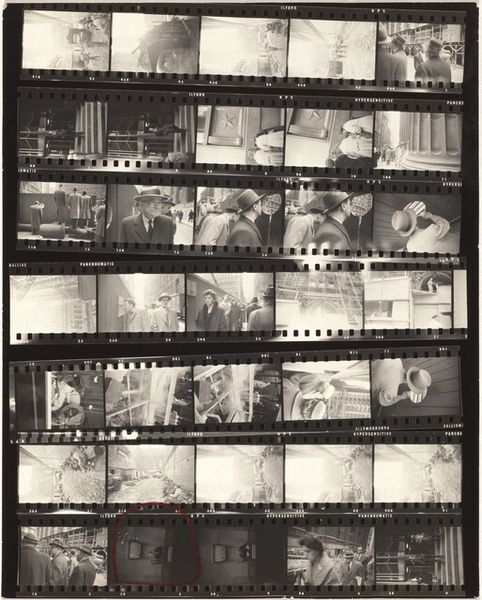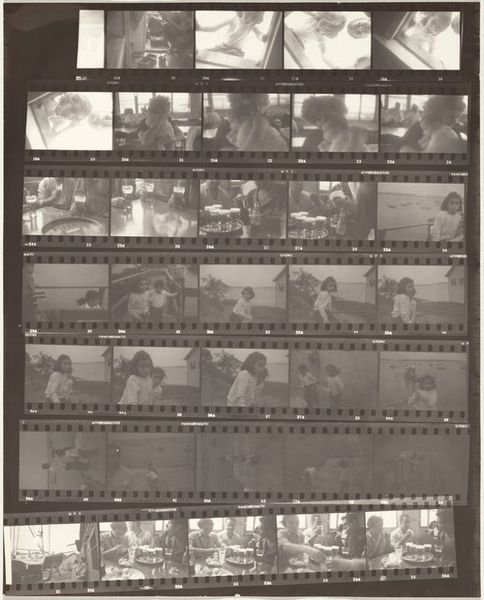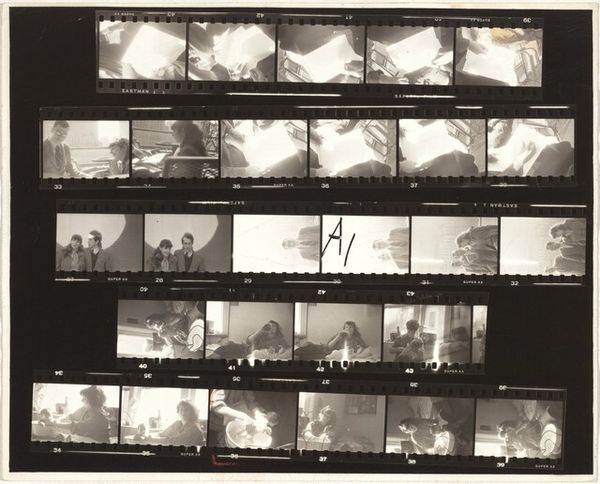
Dimensions: sheet: 20.2 x 25.2 cm (7 15/16 x 9 15/16 in.)
Copyright: National Gallery of Art: CC0 1.0
Editor: Here we have Robert Frank's "Family--New York City no number," a gelatin silver print from 1953. What strikes me is the raw, almost voyeuristic quality of these contact sheets. What's your take on this work? Curator: Well, looking at this piece through a materialist lens, the very format of the contact sheet becomes significant. It lays bare the photographic process itself – the celluloid strips, the manufacturer’s markings, the imperfections. Editor: Right, it's not just the final image but the whole process laid out. Curator: Exactly. It makes us consider Frank’s labor. Each frame is a record of a deliberate act. Look closely; there’s an intimate engagement here that defies the clean, often sterile presentation we expect from fine art photography. Also, it challenges traditional boundaries by valorizing what’s often considered the intermediary steps of the photographic process. Editor: I see what you mean. The usual way artwork is exhibited is to focus on the final polished product and here it’s really different. What about the social context? Curator: The accessibility of photography as a medium must be taken into consideration. Frank documents scenes from everyday life, making commentary accessible to a wider range of people. The urban landscapes and family interactions offer commentary on middle-class social life, both then and potentially now. It allows us to observe consumer habits. Editor: That's an interesting observation; the way the process becomes a comment. Curator: It is. We get to observe these families interacting, which further encourages our critical consumption habits, which makes it impossible for one to consume art passively here. The imperfections visible in the images themselves further add complexity. Editor: Thanks for your perspective. It definitely highlights the social and artistic layers within the artwork, making us think of the artist and his techniques. Curator: Absolutely, examining how things are made, and by whom, always provides another enriching way of encountering art.
Comments
No comments
Be the first to comment and join the conversation on the ultimate creative platform.
